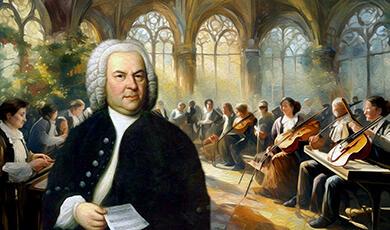The Composer in Action
Share
- Details
- Text
- Audio
- Downloads
- Extra Reading
This event builds upon the work of last year's series in offering a clearer view of the modern composer's work. Piers Hellawell will take the audience through thecomposition of a short passage from his recent work, using not only a recording of the end-result but also sketches and notes from the original process.
Download Text
The Composer In Action
Professor Piers Hellawell
My series seeks to bring the reality of music composition and its world more sharply into focus. Last year at this point I introduced a recent work with the help of its performers; this year I want to pursue a different approach, by lifting the corner of the composer’s hearthrug to see what lurks beneath the surface of a recent work, seen and heard from my own perspective. A composer is often not the most detached observer of how the music actually functions, but the creator does have unique and effectively sole access to the decision-making process behind an artistic work.
Driftwood On Sand
The work in question was written during 2000, and was premiered in March 2001 by the Medici String Quartet. Its form, which is experimental and reflects my own issues around musical structure, is only relevant here in passing: yet I believe that music is thought in action, and that the background of that thought, the planning, is the ideal starting point for it.
Briefly there are two main movements (slow/fast), which are surrounded by four brief preludes whose order is at the Quartet's discretion. The preludes' importance here is that my first example is one of them; as each prelude attempts only one musical state, the technique I am about to introduce is the structural edifice for one such entire piece, lasting around one minute.
My concern today is not with 'macro' elements of musical communication, that is formal designs, but with the minutiae that are rarely articulated by composers, as being apparently of no interest to the listener. This may be the case, but I suspect that there is some interest in following the whole course of construction from decisions and processes through to the finished product. It is this holistic exposition that has I think been missing from the arid technical analyses rightly caricatured in the aftermath of musical modernism; when technical procedures are presented in the context of the musical aims they address, and the musical result to which they give rise, they have some context for the detail. So here we go.
Techniques
Most pieces of any size (eg 6 minutes +) are not built on only one technique (Ravel's Bolero, eg, is exceptional in its singularity). Different musical phases are built on various processes: the composer devises technical means according to expressive needs.
Today, I'll discuss music that is built upon a single melodic thread.
The compositional aim is to to generate a continuous line (to become a melody OR source for fragmentation) that makes motivic sense. Motivic syntax relies upon repetition (usually varied, rather than literal, repetition) . This brings us to heart of composition coherence - balance between repetition (familiarity) and transformation (surprise). For me, this is the basis of all art. Traditional tonal melody shows it clearly:
EX from Schoenberg's Verklaerte Nacht - melody in E major (Webern's example in his lectures The Path to the New Music)
Webern quoted that to show how Schoenberg was very traditional in construction, for that melody is an ABA , or ternary, construction. As we heard in last year’s talks, Schoenberg gave this balanced repetition/development a name – DEVELOPING VARIATION - and saw its lineage as directly from Brahms. The first phrase of that melody is immediately given an extended repetition [EX on piano].
My own technique sets out to ensure this balance, as I extend a motivic idea. It will seem mechanical: remember that technique IS mechanical. Just as poetic metre, or scaffolding, bestows an order we appreciate without being conscious of the physics, so composing technique is about 'manufactured naturalness'.
My process extends a motif by repeating it with block additions; each block repeats the previous then adds. If I described the formula as 'A, B (which = A+x), C (which = A+B+y), D (A+B+C+z)' and so on, you would all be asleep in seconds – but that’s really what it is. The crucial feature here is that every element is reinforced by repetition, especially the first (A); in addition, new material, or partially new, is constantly fed in. On the other hand, each additive repetition delays the return of the most familiar(opening) material, whose growing familiarity is thus counter-balanced by its diminishing occurrences. Withholding gratification from the listener's expectation is an interesting element of musical cognition, but one well beyond me today. I will only stress that the properties of this linear generation technique are so devised as to ensure balanced recognition and surprise. Here is an example of one of my first expositions of this process, in a work from 1990:
EX Hellawell: Quadruple Elegy (ii)
SHEET 1 - a
To return to Driftwood On Sand.
The top of this handout shows a fragmentary attempt at the motif – merely an upward leap of a '9th' - preceded and followed by a few extensions of it.
Note that my first attempt, a double leap, is then refined to the single upward leap, whose arrow back to first place confirms that I wrote first the double one as the motif, be then refined it into a yet more basic outline, which I then denoted as the basic form. This is typical working for me: when I seek a source material, I generally fail to achieve the necessary simplicity at first, and must instead refine my first idea to reveal its skeleton, as it were.
After these fragments come some elaborations that describe the notes within the span of the initial leap.
SHEET 1 - b
Below this, the initial fragments become a worked-out sequence according to the formula of additive repetition (it can be seen from my dates that this version came the day after the initial scribbles!) Each 'block', beginning with the rising 9th motif, can be seen to be separated by a comma divide (here circled).
One development between a) and b) is that the rising motif from D to high E has itself been slightly decorated meanwhile: it now takes in the lower E - melodically not so significant, but more distinctive in rhythmic profile than the plain 'short-long'. [EX on piano]
The prelude in question consists of a single melodic thread, divided between the two violins and supported by the lower instruments. The above process produces a hypnotic melodic line [EX on piano] that rotates its components with an obsessive quality inseparable from this technique – at least, I always have this quality in mind when building a line in this way. By the end of example b, the expanding unit is quite long - in fact it can be seen that I was too lazy to write the whole thing out again, for the final block.
5. IMPLEMENTATION
The simplest way to implement such a line is to allocate it to an instrumental voice with accompaniment. This prelude does indeed present it as an unbroken line, shared between 2 violins, but the actual implementation differs in one respect from the theory above. Since the violin concerto example heard earlier - perhaps my first exposition of this means - I have used it many times; so for this short piece, perhaps sated with the results outlined above, I decided to take for granted the additive motivic presence, and to use the source material in reverse - presenting first a 'full' chain and then successive reductions of it, until the opening motif alone is left - the final bar. To put it another way, the additive blocks can be seen if you start at the end and work backwards.
Thus the full line runs from the beginning to the bottom line: it starts again in bar 7 (violin 1), then in 10 (violin 2), at the end of bar 12 (violin 1), in 14 (violin 2) and finally - the opening motif - in bar 15.
What of the other instruments? I cannot remember ever using this sort of line with a traditional accompanying texture: instead, the non-melodic voices tend to hover round the melody, mopping its brow and supporting certain notes as they sound. So here, the viola and cello pick out and sustain notes using harmonics: whenever the melodic chain starts again, they do offer a chordal accompaniment to the first motif, as it were giving it a shove.
EX
Sources for this device are diverse: I am aware of strands in both Messiaen and Arvo Part, the latter using the simplest form imaginable - adding a note above, a note below, two notes above, two notes below and so on (EX on piano).
The musical result of this technique relies at least as much on the material's character as on what I have described. What I invest in terms of rhythmic and melodic contour will determine the music. Here, I wanted a restless, twisting line of arabesques that lingered on pitches I could echo as string harmonics - the result is a kind of ringing echo produced by the lower two, as the line progresses. Now we hear the whole piece - all 15 bars of it!
EX Complete prelude/score
7. OTHER PURPOSES
Just as the line resulting from this can be a melodic foreground – it usually is - so it can equally provide some other, less prominent contribution. Elsewhere in DRIFTWOOD ON SAND I used a similar generative process not for foreground, but for accompanying material intended to be entirely subservient - unnoticed, even. The main slow movement's final phase is a long duet between two violins. I wanted this to rest upon a layer of harmonically static twirlings between the lower voices; both parts thus use only four notes, a chordal shape that has already been very important earlier in the movement:
EX chord [on piano]
As long as that harmony persists, I use the motivic extension to spin it out in the two lower instruments. Once I change the harmony (raising it a semitone) I change the accompaniment to accentuated chords, but when the previous harmony returns, so does the sinuous, twisting duet of lines. This tape example has the solo violins on top, so you need to try to block them out and hear what is underneath:
EX bars 52-60
These lower lines of accompaniment are constructed much as before: but here a refrain motif alternates with a growing insertion that uses the same pitches. As both notes and rhythms are the same for the refrain (EX piano) and the insertion (EX piano), they form a seamless line in practice, in which the separate components are indistinguishable, especially as the two lines using the same four notes are twisting around one another as inseparable partners. Only my sketch shows the segmented construction behind this - blocks of - Refrain: A: Refrain: A1+A: Refrain: etc
SHEET 2 a
At the foot of this page are two motivic extension sketches, one for each lower instrument. 2 a marks the viola, while SHEET 2 b shows the manuscript of the whole score for bar 52 onwards. The only difference is that the viola in the score has the appearance of seamless consequence, while the sketch, as it were, is marked by the scaffolding, - the segmentation into components.
To conclude: it is often countered to presentations like this that the great melodies of the past's new music did not need to be constructed: they flowed from some spiritual well now long dried up. To this argument I offer not only the sketches of many great mainstream European figures but also the results themselves: workings of such intricacy and, frequently, such asymetry can only be the result of conscious artifice. Take the following melody from Haydn's Symphony no 101: though we hardly notice it, this has a number of separate motivic cells. That Haydn was aware of these as separate cogs is demonstrated by the fact that he builds the entire movement from treatments of these individual motifs - NOT from repetitions of a single, spontaneous melody. He breaks the whole up into useable components - but he can only segment what he knows is there already!
EX Haydn Symphony no 101 (iv)
So I want to conclude with the final part of my slow movement, starting at the point on Sheet 2, after which the lower instruments move to a tremolo accompaniment, always subservient to the two violins that ascend ever higher
EX Hellawell Driftwood On Sand (slow movement b.52-end)
Piers Hellawell, 24 May 2002
This event was on Fri, 24 May 2002
Support Gresham
Gresham College has offered an outstanding education to the public free of charge for over 400 years. Today, Gresham College plays an important role in fostering a love of learning and a greater understanding of ourselves and the world around us. Your donation will help to widen our reach and to broaden our audience, allowing more people to benefit from a high-quality education from some of the brightest minds.


 Login
Login







